This blog is shared on Gdrive for Assessment, Feb 2024.
To the assessors: This work was taken from my website and can be directly accessed using the following link: https://karenstanderart.co.za/the-making-of-a-sociable-weavers-nest/.
This blog mostly deals with my research into Ruth Falkenstein’s work and how I translated that into my making. I share learning techniques, work with different materials, and consider contextually the ideas of human/non-human interconnectivity.
The materials
After being inspired by natural fibres, I plan to make two nests: one with natural fibres and the other with steel wire.
Natural fibre nest: Ivy, raffia, paper, twigs and sticks
Steel nest: made with found wire, glass, rocks, plastic, twine I collect on my walks
The design of the form
Work designed or envisioned to form the wire and steel work of Claire Flakenstein, but I also have to acknowledge learning from the work of contemporary artists, Bianca Severijns, who primarily work with paper (Separate blog on artists I researched: https://karenstanderart.co.za/artist-researh-for-advanced-practice/)
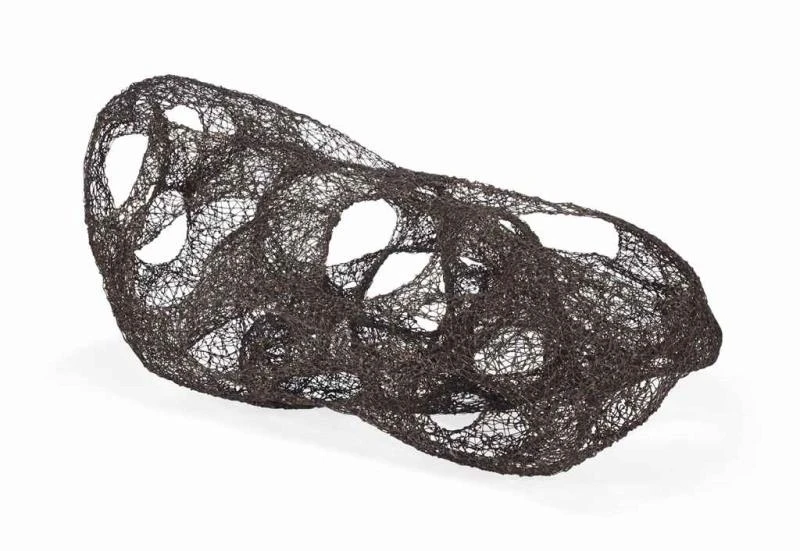
For the natural fibre work, I used a work from earlier and decided to extend this work, as I have incorporated ivy for the structure.
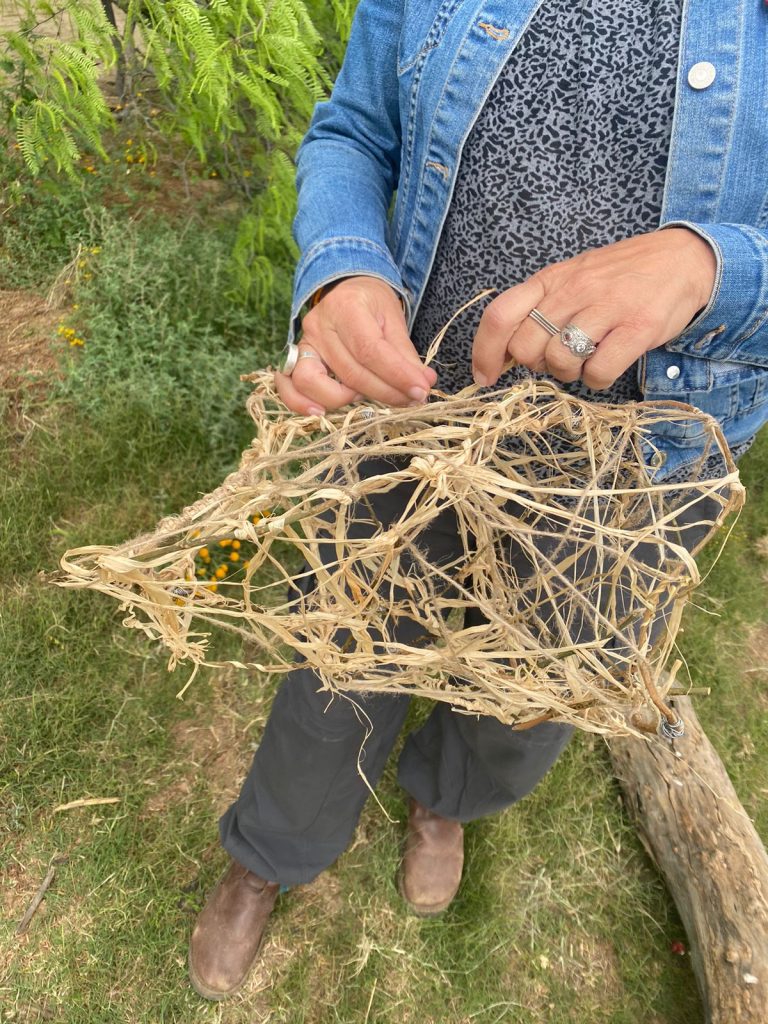
I had to source more ivy to create the structure as I extended it. The ivy structure gives me the idea of inside folding outside, as with Falkenstein’s work. There are many ways to view the work, even with some raffia woven into the structure to create a nestlike form. I must remember the size as I extend the form with the ivy.
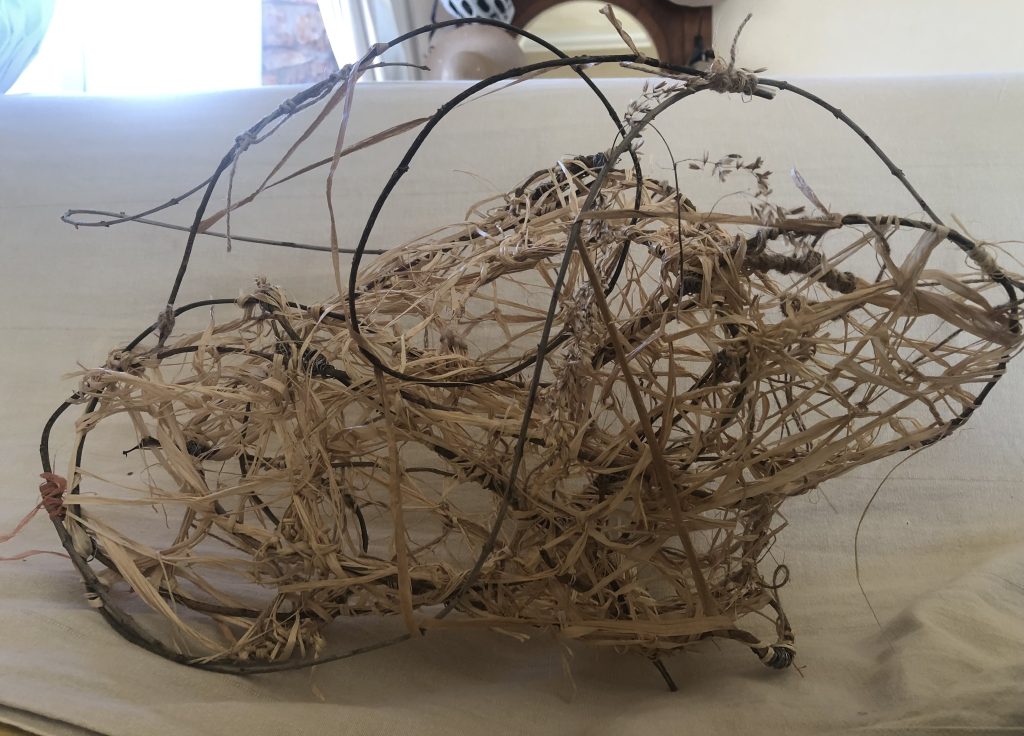
The learning to make
This making is an evolving process as I learn to bend and twist the form and thread materials to tie or weave into the structure. I would call my technique a type of random weaving, which gives me the freedom of expression to make the structure evolve as I work. I started finding it more accessible to hang the work on the wall and stand before it as I worked on it. It is a struggle to create and keep the structure with the ivy vines; I improvise as I go along. I use raffia to tie the structure. I am working with fresh-cut ivy vines as I ran out of dried ‘stock’. I also have no idea how much more I might need and if I need to ‘forage’ more. I cut from a friend’s ivy plant, and the ‘material’ source is now secured. I think the exciting part of making is the experience of twisting and bending the shapes – I feel I have an inside look into the object as I continue making and starting to weave the raffia onto the frame. I see possibilities in little chambers like nests and tunnels and am reminded that in a natural nest, these chambers have a valuable role in keeping the birds and chicks cool and protected from extreme temperatures in their natural habitat. It reminds me of care and my reading about it for the Research part of this course. I went back to a more recent essay by P de la Bella Casa, Nothing comes without its world: thinking with care, where she states her learning and then by ‘borrowing’ from Donna Haraway, she refert to the title of her essay: “‘….. ‘nothing comes without its world’ and refers to its take on feminist discussions on the situatedness of knowledge. She states that , “knowledge is situated means that knowing and thinking are inconceivable without a multi- tude of relations that also make possible the worlds we think with. The premise to my argument can therefore be formulated as follows: relations of thinking and knowing require care.” I feel this suggests that my creative process involves a recognition of the multitude of relations and contexts that contribute to the formation of my artistic expression. Can I say that it implies a careful and thoughtful engagement with the materials, processes, and influences that is now shaping my work?
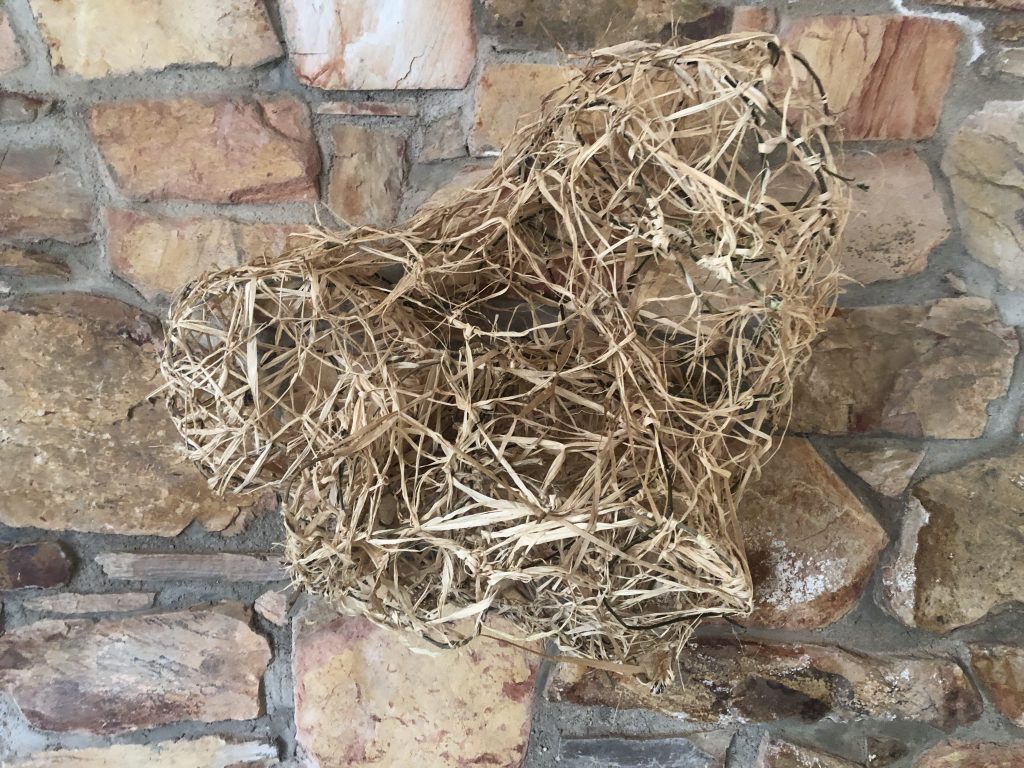
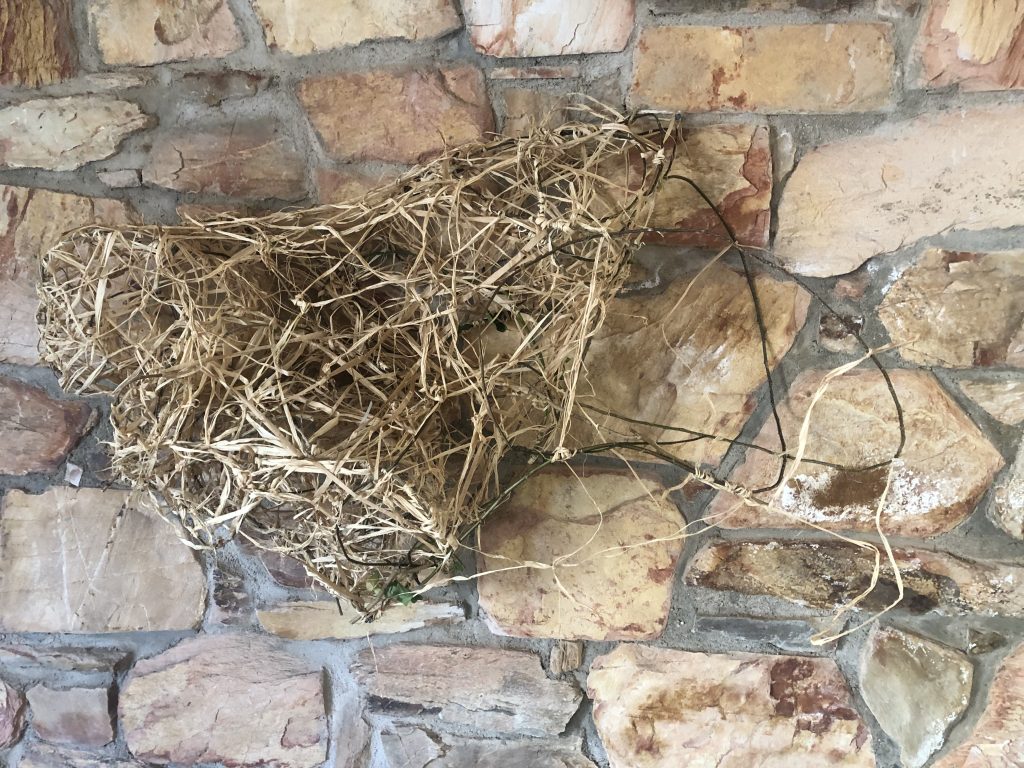
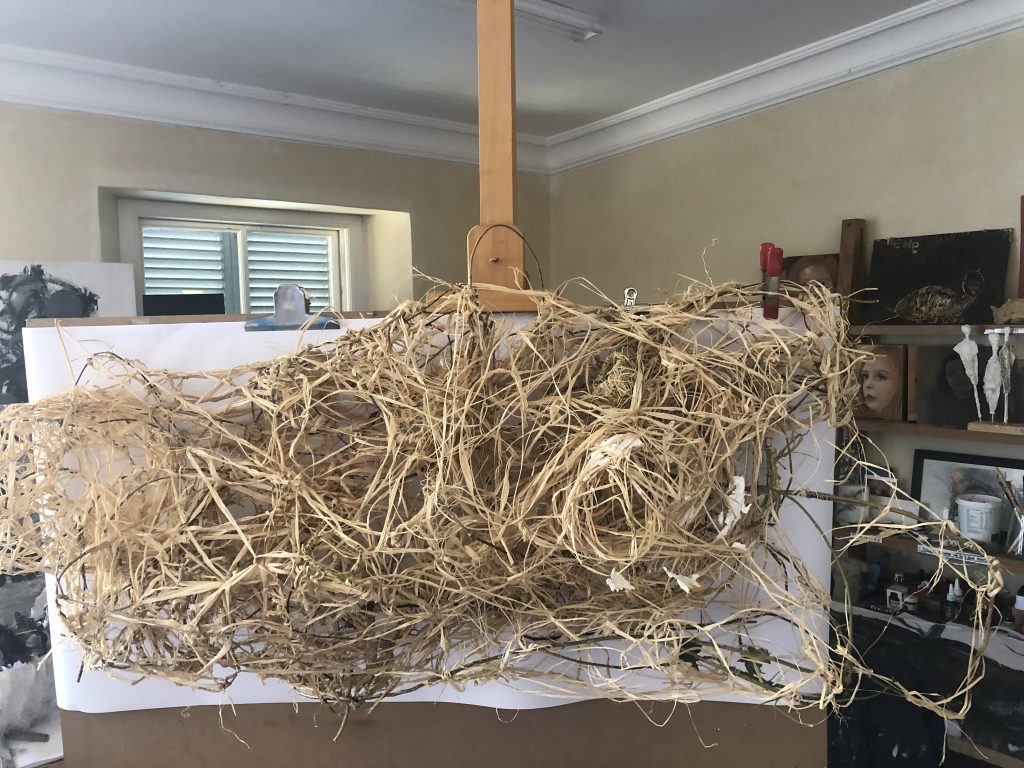
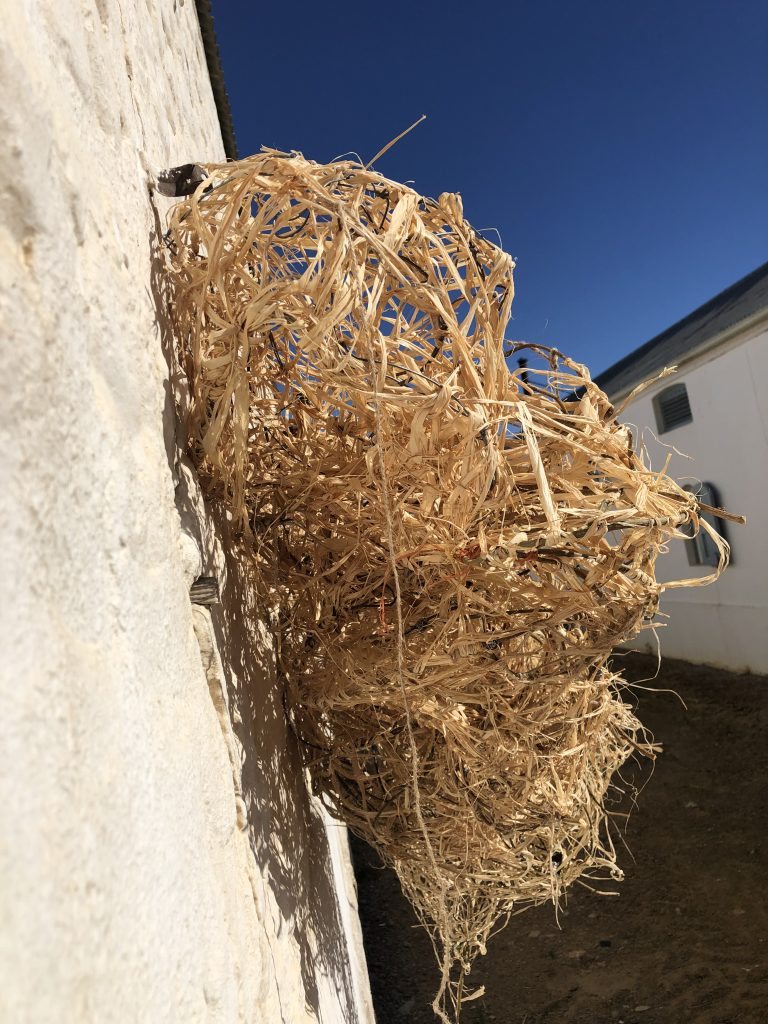
The making of the work below (Fig. 8) was inspired by the research of another artist, Bianca Severijn’s works with twisted paper. This work reminds me of the sociable weavers’ nests. I layered the twisted paper like I would imagine these birds layered twigs on the camelthorn tree in nature.
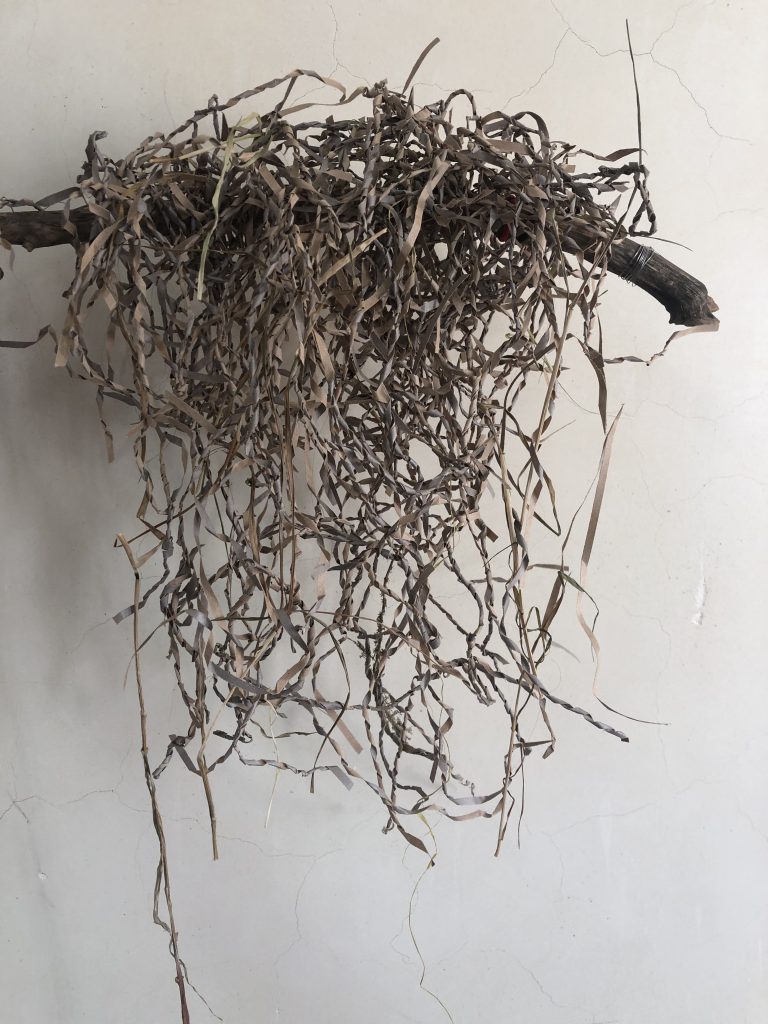
I like considering what Petra Lange-Berndt suggests in Documents of Contemporary Art: Materiality: ‘…to follow the material means to enter a true maze of meanings’. In this way, the form of the nest and its material can be explored with the twisted paper as a sculpture form. Newsprint, recycled paper, shredded paper, tissue paper – it reminds us of the nests being collected or gathered from the immediate area, temporary, fragile, and could burn.
Wire work
I bend and form a nest shape with the wire. I first made a small one with wrapping paper. I also made drawings of this work.
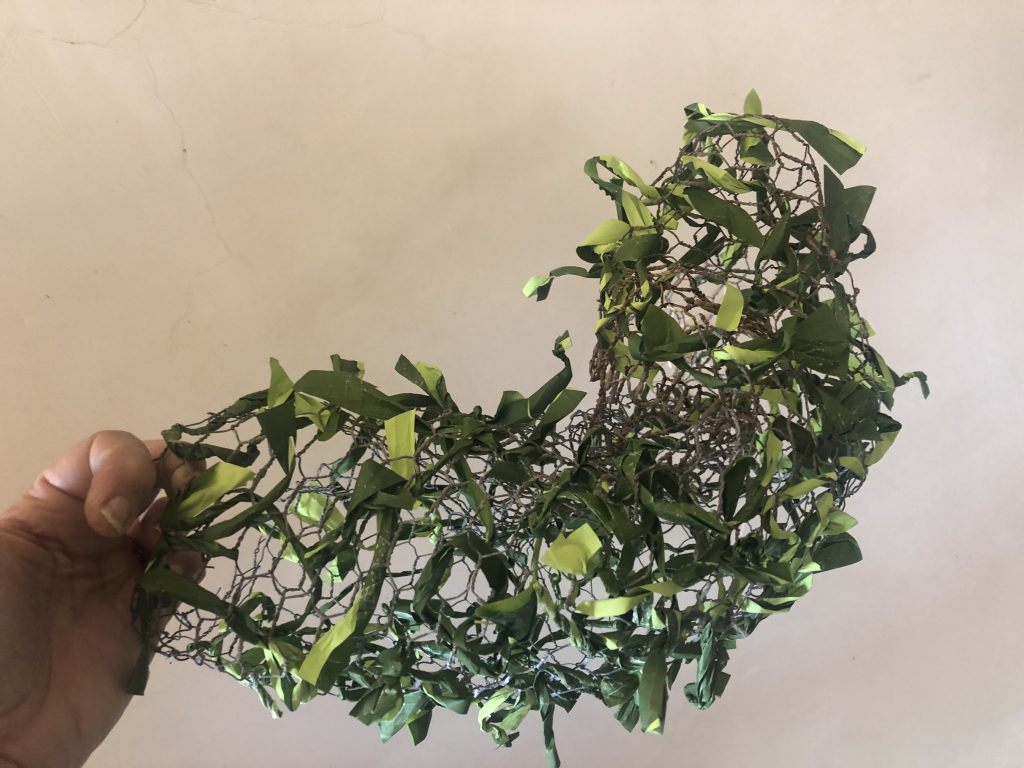
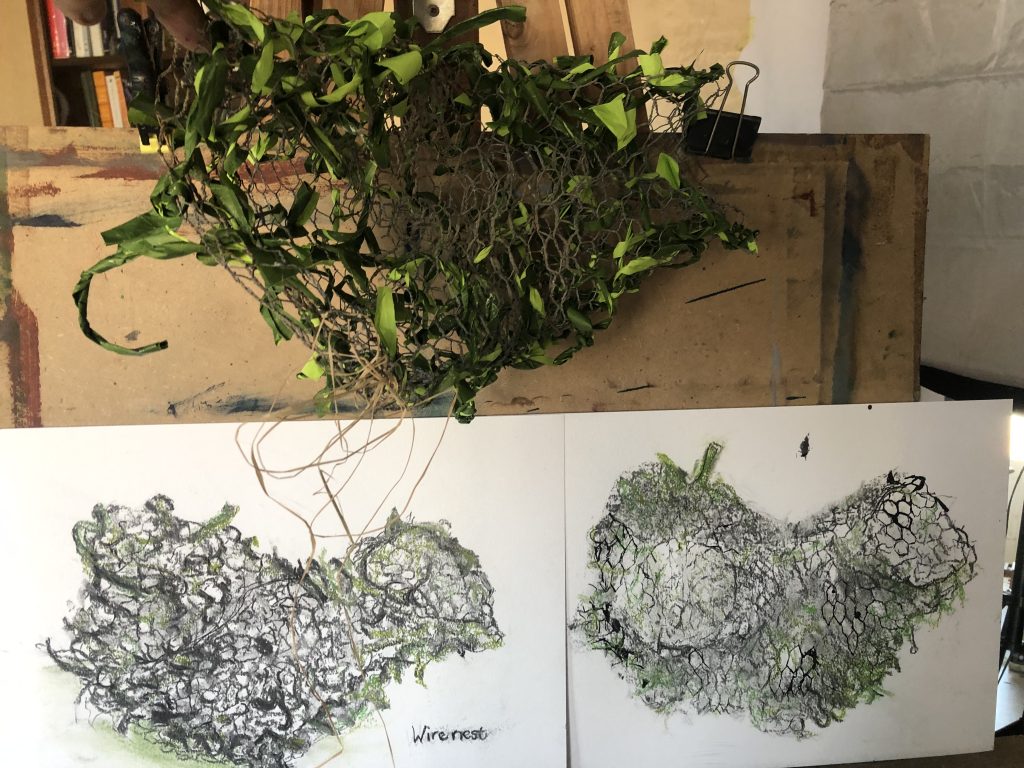
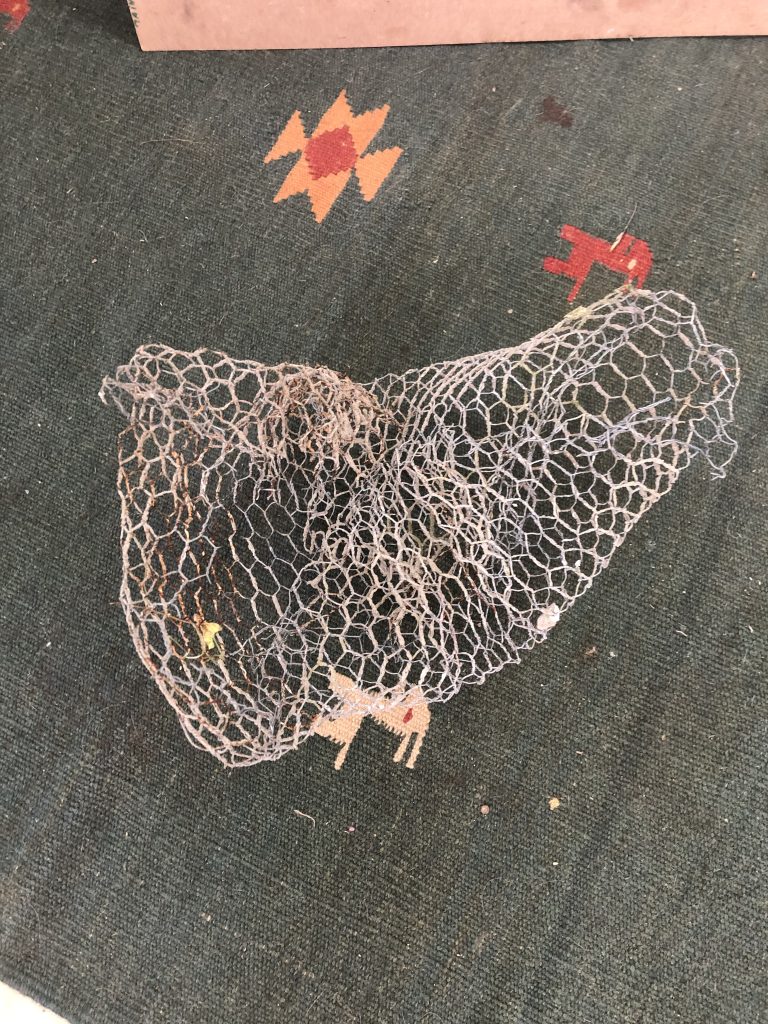
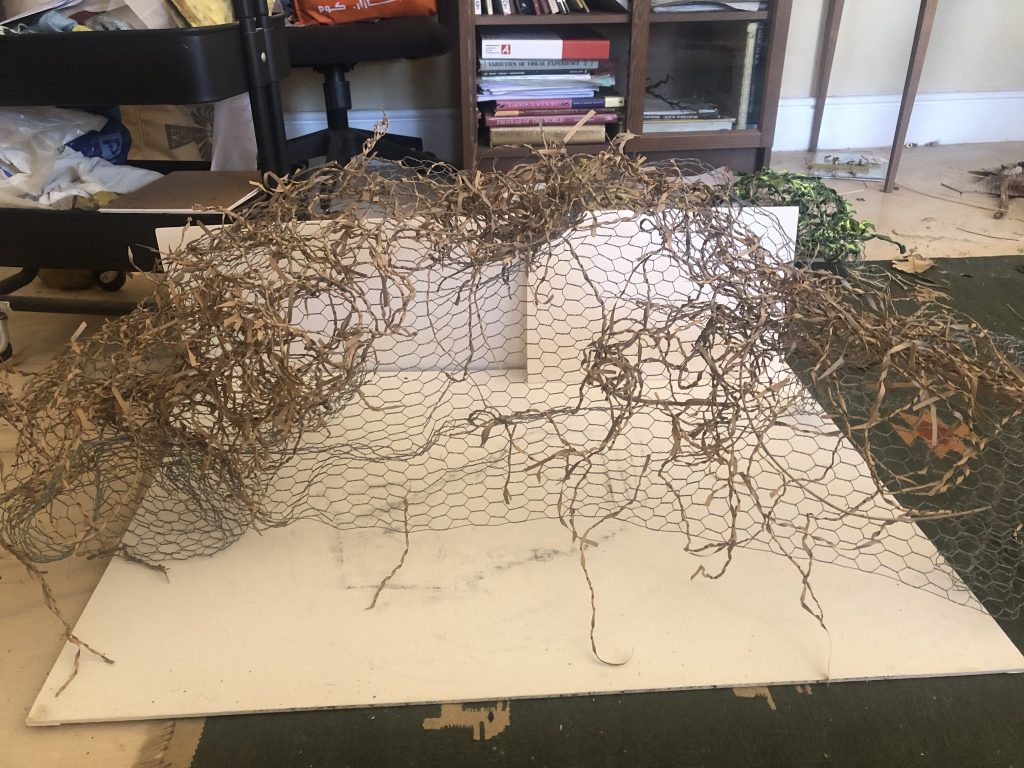
Above work is an exploration inspired by the work of Claire Falkenstein
I
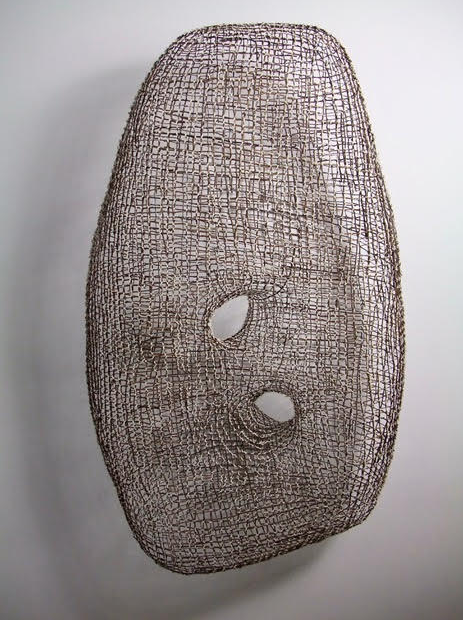
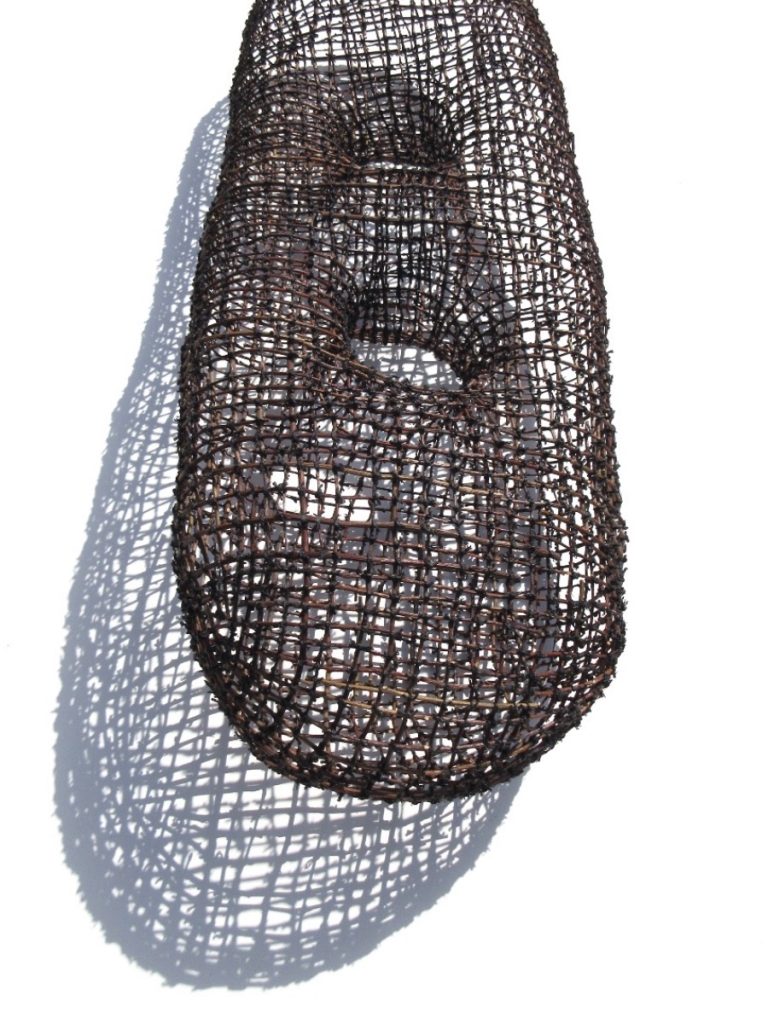
Reflecting on the making
Could I call this making a type of reflective play with materials? I had to manipulate to get a form, but also work with the natural way the material wanted to move and accept where it took me. This reminded me of a more meditative process and gave me lots of expressive freedom to make, even when it felt like complete chaos. I had no idea how the fibres of the ivy would react, and I think the learning is also about adapting to the plant material I chose to work with. I learned if I work denser, the ivy structure deforms easily. It became clear that there is a lot to learn about the tactile qualities of plant fibres, and it brought me to look at work done by fibre artists who explore the sculptural capacities of these natural fibres. I see these as specific moments in my making process: it prompted me to make more decisions about materials, shapes, or structures. It feels that my thinking and knowing were engaged.
Thinking about the wider use of materials, like using a variety of natural fibres in my nests and other sculptures, I can consider the interplay between them: how the materials interact visually and tactilely. By combining different fibres, I could create textures and contrasts. Do these combinations themselves carry symbolic or aesthetic significance? I also ask if I allow material to indicate how I work and ‘siphon’ its intention. I think there is a search in my work to have meaning come from the object instead of having an idea first and making a piece about it. As I explored nests, I became more aware of the marks and forms surrounding me and how vulnerable these objects are in terms of decay and disintegration. I see this as a place I would like to focus my making, as I aware of nature surrounding these objects.
This exploration led to more abstract making using weaving techniques which resemble a nest or a cocoon and were inspired by the work made by Ruth Asawa. I worked with scale in these works regarding how it relates to the human and non-human interconnectedness I am interested in. I also love playing with other components in this process, namely shadows. As the light changes on the work or one moves around, the shadows create new perspectives/views and share something of a connectedness with place and space.
I want to think that nests became the material and object I research and make around ideas about interconnectivity and working or collaborating with the non-human. In a separate blog, I started to write conversations with another student and my thinking conversationally and will incorporate some of this learning in this part. (Blog called: The thing with vessels) I consider a nest like a container. The nest is a barrier, shielding the vulnerable life inside from harm. It embraces the eggs and young birds, cocooning them in a realm of warmth and security. The meticulous construction ensures stability, preventing the precious contents from rolling or falling out. My making and writing explore ideas around a physical space for safety, a caring space, gathering of ideas, interweaving, connecting, and natural materials as materials to work with. I can also test my valuation and deepen my appreciation for the unique qualities of different materials by having this hands-on experience. This learning can be shared with viewers in my making and documenting of the process.
I can connect directly with nature by exploring natural materials or elements in my art. I can argue that nature became a collaborator in my creative process.
LIST OF ILLUSTRATIONS
Fig. 1 Falkenstein, C. (1956) Involuting Zero. [Photograph from Christies.com of a welder copper wire and silver work] At: https://www.christies.com/lot/lot-5755009 (Accessed 28/10/2023).
Fig. 2 Stander, K. (2023) Rafia Involution after Falkenstein. [Photograph of WIP] In possession of: the author: Langvlei Farm, Riebeek West.
FIg. 3 Stander, K. (2023) Extending the work with more raffia. [Photograph] In possession of: the author: Langvlei Farm, Riebeek West.
Fig. 4 Stander, K. (2023) Work in progress. [Photograph] In possession of: the author: Langvlei Farm, Riebeek West.
Fig. 5 Stander, K. (2023) Work in progress. [Photograph] In possession of: the author: Langvlei Farm, Riebeek West.
Fig. 6 Stander, K. (2023) Nest after Involuting Zero. [Photograph in Studio] In possession of: the author: Langvlei Farm, Riebeek West.
Fig. 7 Stander, K. (2023) Nest after Involuting Zero. [Photograph in Landscape ] In possession of: the author: Langvlei Farm, Riebeek West.
Fig. Stander, K. (2023) Nest xxxxx.[Photograph] In possession of: the author: Langvlei Farm, Riebeek West.
BIBLIOGRAPHY
Plante, Michael (1994). Sculpture’s Autre: Falkenstein’s Direct Metal Sculpture and the Art Autre Aesthetic. Online in the Art Journal , Vol. 53, No. 4, Sculpture in Postwar Europe and America, 1945-59 (Winter, 1994), pp. 66-72.
Lange-Berndt, Petra (2015) Introduction/ How to be complicit with materials. From ed. Lange-Berndt, Petra, Materiality, Documents of Contemporary Art, Co-published by Whitechapel Gallery and MIT Press, 2015 pp 12-20.
‘Monochromatic Hand-Torn Paper Art: Interview with Bianca Severijns‘, In; All things Paper,12/01/2017. At: https://www.allthingspaper.net/2017/01/monochromatic-hand-torn-paper-art.html (Accessed 15/10/2023).